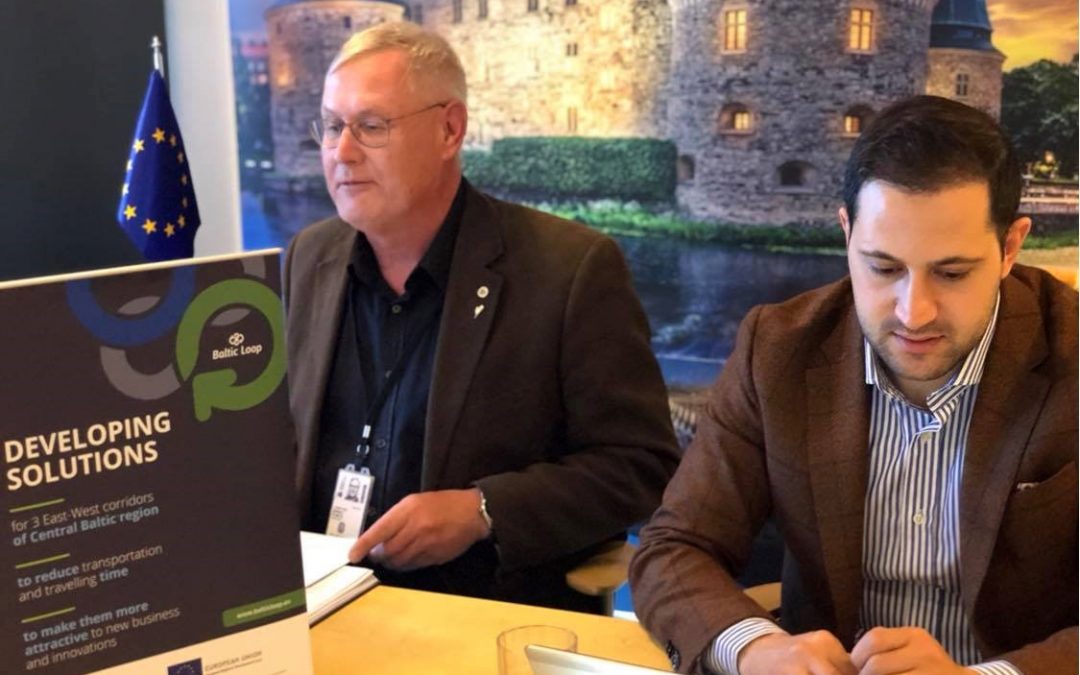In the framework of the Baltic Loop project, Ahmed Alaeddine and Fredrik Idevall participated in the conference TRANSESTONIA. The main goal of the conference is to discuss and reach agreements on further transport development between China and Sweden via Kazakhstan, Russia, and Estonia. Delegates from all countries were represented.
Since ancient times, Estonia has been an important gateway between the Nordic countries in Scandinavia and the east. The Baltic countries are the beginning of the eastern trade route that connected to the Silk Road in Persia. There are again thoughts on using this old trade route. Modern rail systems with train commutes provide fast, reliable, and safe transport.
Today, there are a number of train commutes between China and Sweden. The usual transport arrangement is via shipping where the port of Gothenburg receives the goods, which then continues on land by road or rail. Another arrangement is that transport from China is unloaded in one of Europe’s major ports to continue the road to Sweden.
What TRANSESTONIA wants to achieve is that the goods are transported by rail between the countries of China, Kazakhstan, Russia, Estonia, and then via sea to Sweden. There are major temporal and environmental benefits to working for a transfer from shipping and aviation to rail. Today it takes about 12 days to transport goods from China to Sweden by train, while the figure for sea shipping is 40 days, says Ahmed Alaeddine, one of the project managers of the EU project Baltic Loop.
Maritime transport is by far the most dominant mode of transport for goods between China and Europe. The share of maritime transport amounts to as much as 94% compared with the railway’s market share of only 1%.
The railway has a huge potential to take market shares from maritime transport. It is both a faster and more sustainable mode of transport. One explanation for the low market share is that China has not previously marketed and subsidized rail traffic, says Ahmed Alaeddine.
The region of Örebro County is following with interest the work of improving the railroad between the countries from Sweden to China. The development of an improved railway between these countries is good for the Baltic countries such as Estonia, Latvia, Lithuania, and Scandinavian countries such as Sweden, Finland, and Norway as the conditions for the exchange of goods become simpler and faster while we make a greener transition. The problem now is to be able to fill the train carts that are going back to China with export goods.
Sweden imports more from China than we export. We need a balanced exchange trade between the countries in order to achieve filled train carriages in both directions and that the region’s companies choose the train as a mode of transport. Today, about 30 percent of the wagons from Europe go back empty to China. A more balanced trade is a way to further improve the conditions for good rail traffic, says project manager Ahmed Alaeddine.
Train commutes between Europe and Asia are becoming more and more a reality. It is now up to the Swedish business community to make the best use of this opportunity.


